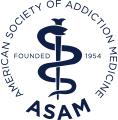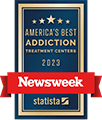April was first designated as Alcohol Awareness Month in 1987. This monthlong observance was established by the National Council on Alcoholism and Drug Dependence (NCADD) to help reduce stigma and promote greater understanding about alcohol addiction, which is commonly referred to as alcoholism.
Through the years, the public perception of alcohol addiction has improved. While this disorder was once mistakenly viewed as a failure of character or a lack of willpower, ongoing awareness campaigns have highlighted the truth that alcoholism is a chronic progressive disease.
However, even after decades of progress, significant challenges remain. As we work to increase awareness of alcohol use, abuse, and addiction, we should keep the following four areas in mind:
- The scope of the problem – Understanding how many people struggle with alcohol use disorder (which is the clinical term for alcohol addiction)
- The magnitude of the impact – Learning how individuals, families, and communities are affected by alcohol addiction
- The signs of trouble – Identifying the thoughts and behaviors that may indicate that you have become dependent on alcohol
- The path to recovery – Realizing that help is available, treatment works, and recovery is possible
The global fight against alcohol addiction is far from over. But every effort to educate people about the scope, impact, signs, and possible solutions for this disorder is a vital step toward a healthier world.
The Scope of the Problem
As is the case with other forms of addiction, alcoholism can be an isolating experience. If you’ve become dependent on alcohol, you may feel as though no one can possibly understand what you are feeling.
The truth is that if you are struggling with alcoholism, you are far from alone.
According to the National Institute on Alcohol Abuse and Alcoholism (NIAAA), more than 14 million adults in the United States meet the criteria for alcohol use disorder. The NIAAA has also reported the following statistics about alcohol use, abuse, and addiction in the United States:
- Alcohol use disorder affects about 7.6% of adult men and about 4.1% of adult women.
- More than 400,000 adolescents meet the criteria for alcohol use disorder.
- More than 10% of children in the U.S. live with a parent who has struggled with alcohol addiction.
- In an average year, fewer than 8% of adults and about 5% of adolescents who have alcohol use disorder receive appropriate treatment.
Alcohol addiction impacts individuals of all ages, genders, ethnic backgrounds, religious affiliations, and socioeconomic levels. No group of people is immune from the potentially devastating impact of this prevalent disorder.
The Magnitude of the Impact
It is virtually impossible to overstate the negative impact that alcohol use, abuse, and addiction have had in the United States and throughout the rest of the world. And the problem appears to be getting worse.
For example, an NIAAA study revealed that between 1999 and 2017, the annual number of alcohol-related deaths in the United States increased by more than 100%.
- In 1999, 35,914 deaths were attributed to alcohol-related causes.
- By 2017, the number of alcohol-related deaths was 72,558.
- Across that 18-year time span, more than 944,000 alcohol-related deaths were recorded by the National Center for Health Statistics (NCHS).
The World Health Organization (WHO) has reported the following facts about the impact of alcohol use, abuse, and addiction throughout the world:
- Alcohol is a causal factor in 60 types of diseases and injuries and a component cause in 200 others.
- Alcohol use contributes to more than 2.5 million deaths every year.
- Almost 4% of all deaths worldwide are attributed to alcohol. This means that alcohol use is responsible for more deaths than HIV/AIDS, violence, or tuberculosis.
- Alcohol use is the leading risk factor for death in males ages 15–59.
The WHO report also noted that alcohol is associated with a wide range of social problems, including violence, the abuse and neglect of children, and employee absenteeism.
The Signs of Trouble
According to the fifth edition of the Diagnostic and Statistical Manual of Mental Disorders (DSM-5), symptoms of alcohol use disorder include the following:
- Using alcohol in larger amounts or for a longer period of time than intended
- Frequent unsuccessful attempts to reduce or eliminate the use of alcohol
- Spending considerable amounts of time obtaining, using, and recovering from alcohol
- Using alcohol even when it is clearly dangerous to do so
- Continuing to use alcohol even in the aftermath of problems that are directly related to prior use
- Developing tolerance, or needing greater amounts of alcohol in order to experience the desired effect
- Experiencing distressing physical or psychological withdrawal symptoms when not using alcohol
But what do these symptoms look like in the course of a person’s day-to-day life? Here are a few questions to ask yourself about your alcohol use:
- Do you find it difficult or impossible to get through the day without drinking?
- Have you lied to friends, family members, or colleagues about the amount or frequency of your alcohol use?
- Have friends or family members said they are concerned or worried about you because of your alcohol use?
- Has your alcohol use led to conflicts with friends, family members, or romantic partners?
- Do you find it difficult or impossible to enjoy an event or experience if you’re not able to drink?
- Do you use alcohol to “drown your sorrows” or in an attempt to deal with stress, pressure, failures, or disappointments?
- Do you use alcohol to help you fall asleep at night or as an “eye–opener” to prepare yourself for the day?
- Have you ever experienced blackouts or memory loss when drinking?
- Do you find it difficult or impossible to stop drinking once you’ve started?
- Do you think you might have a problem with alcohol?
If you answered “yes” to any of the questions above, you should consult your family doctor or another healthcare provider. Completing a thorough assessment and receiving an accurate diagnosis are two vital steps on the path to recovery.
The Path to Recovery
Once you’ve confirmed that you are struggling with alcohol use disorder, you need to determine what types and levels of care are right for you. As you begin to research treatment options, it is essential to understand that there is no one “perfect” type of treatment. What’s most important is finding the approach that best meets your unique needs.
For example, depending on the nature and severity of your struggles with alcoholism, you may need to complete detox before starting treatment. Trying to get through alcohol withdrawal on your own can be painful and, in some cases, dangerous. Completing detox under the care of experienced professionals allows you to get through the withdrawal process with maximum safety and minimal discomfort.
Various personal factors will also influence whether residential care, a partial hospitalization program (PHP), an intensive outpatient program (IOP), or a combination of multiple levels of care is the best option for you.
Regardless of what your path to recovery looks like, please know this: Help is available, finding the right treatment provider can make all the difference in the world, and you are capable of achieving more than you realize. When you get the care you need, you can learn to manage your symptoms, regain control of your behavior, and resist the urge to use alcohol.
Awareness and education are two vital weapons in the fight against alcohol addiction. To learn more, or to determine if Wilmington Treatment Center is the right place to start your recovery journey, contact us today.







